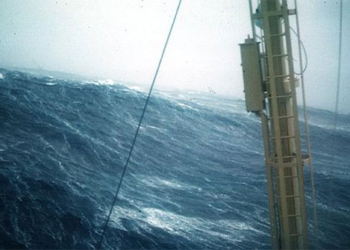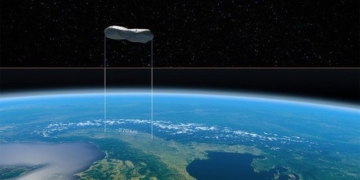Just as the land surface of the Earth has towering mountains and vast valleys, the ocean world also features a similarly diverse topography.
One of the most fascinating and intriguing locations at the ocean floor is the Mariana Trench – a fissure in the western Pacific Ocean that stretches over 1,580 miles (2,540 km) and houses the Challenger Deep – the deepest known point on Earth’s surface, approximately 11,000 meters below sea level. For comparison, this depth is nearly three times that of the RMS Titanic wreck site in the Atlantic Ocean and deeper than the height of Mount Everest. Below are some captivating facts about this trench.
The Director of “Titanic” is Among the Few Who Explored Challenger Deep
There have been very few daring human expeditions to Challenger Deep. The first-ever expedition to this trench took place in 1960, using the Trieste – a spherical submersible.
During the dive, explorers Jacques Piccard and Don Walsh expressed their astonishment at seeing living creatures in a place where scientists once believed nothing could survive.
Following Jacques Piccard and Don Walsh, James Cameron, the director of the 1997 film “Titanic,” became the next person to explore Challenger Deep. Using a submersible he helped design, James Cameron reached a depth of about 10,908 meters, setting a world record in 2012.
A Plastic Bag Found in Challenger Deep
Another explorer who returned to this site was Victor Vescovo, who descended to a depth of 10,927 meters and set a world record in 2019. Vescovo provided a sobering insight into humanity’s impact on these seemingly untouched locations. He observed a plastic bag and candy wrappers at the bottom of the Mariana Trench.
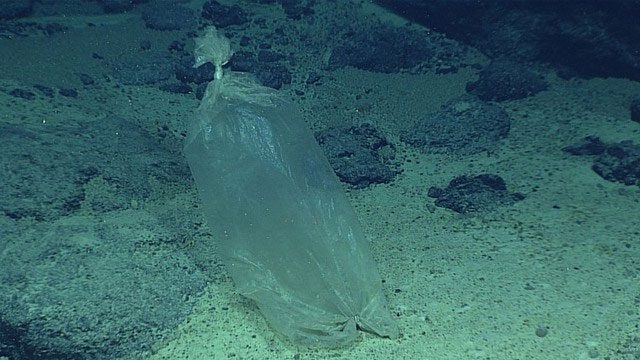
Plastic bag found under Mariana Trench.
Since Victor Vescovo, a few more explorers have ventured into Challenger Deep. However, there are very few expeditions organized to this site due to its dangerous nature.
According to the National Oceanic and Atmospheric Administration (NOAA), for every 10 meters descended below the ocean surface, the pressure on an object increases by 1 atm. An atm is a unit of pressure measurement equivalent to 6.4 kg over 6.5 cm². A trip to Challenger Deep could subject a submersible to pressure “equivalent to 50 gigantic jetliners” pressing down.
Located in an Area Named After the God of the Underworld
Similar to Earth’s atmosphere, the ocean can be described in layers. According to NOAA, the uppermost layer is called the sunlight zone and extends only 200 meters below the sea surface.
The mesopelagic zone, also known as the twilight zone, stretches from the end of the sunlight zone down to about 1,000 meters. Following this is the bathypelagic zone or midnight zone, and the abyssopelagic zone or trench zone – ranging from 4,000 meters to 6,000 meters.
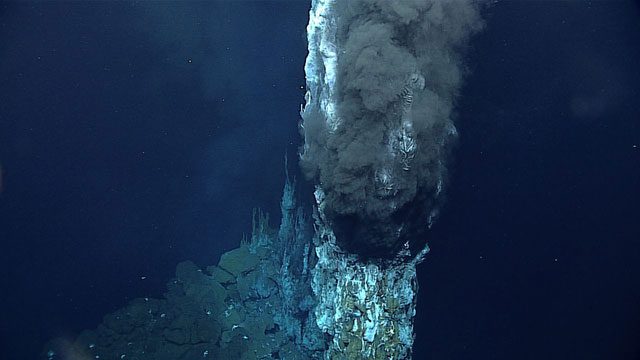
A hydrothermal vent on the ocean floor.
In the abyssal zone, very few forms of life can survive. Sunlight cannot penetrate here, while temperatures are nearly freezing. But Challenger Deep goes even deeper – into the hadalpelagic zone, or hadal zone. It is named after Hades, the god who rules the underworld in Greek mythology.
A Habitat for Unique Marine Life and Mud Volcanoes
The hadal zone is one of the least explored habitats on Earth. At record depths devoid of sunlight, it was long thought that nothing could exist there. But this notion has been dispelled.
“Even at the bottom, life persists. In 2005, tiny single-celled organisms called foraminifera, a type of plankton, were discovered in the trench,” according to NOAA. Findings in Challenger Deep include colorful rock formations and sea cucumbers living on the ocean floor.
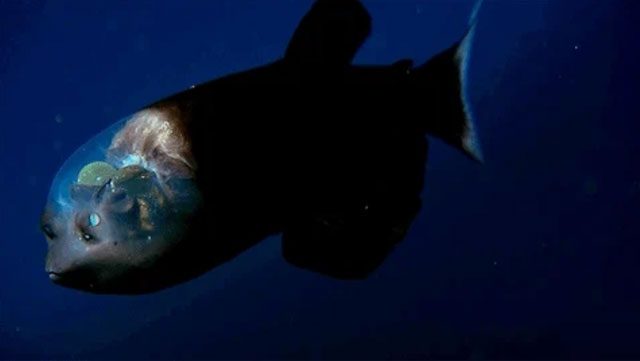
Barreleye fish.
According to NOAA, a series of mud volcanoes and hydrothermal vents at the Mariana Trench also support unusual life forms.
Although the hydrothermal vents in mud volcanoes emit hot, highly acidic water, bizarre species and extremophiles can still thrive there. Despite the absence of sunlight, these organisms benefit from nutrient-rich water that seeps from the hydrothermal vents. The life-supporting environment is the result of chemical reactions between seawater and magma rising from below the ocean floor.
The Exact Depth of the Mariana Trench Remains Unknown
The ocean floor remains one of the most mysterious places to humanity. In fact, maps of the Moon and Mars are much more detailed than maps of the Earth’s ocean floor.
Although humans have explored the ocean surface for tens of thousands of years, only about 20% of the ocean floor has been mapped, according to 2022 data from NOAA. However, with heightened interest in the Mariana Trench, researchers have undertaken several efforts to produce increasingly detailed images of its features.
But this is no easy task: Due to the vastness and depth of the ocean floor, scientists must rely on sonar technology to try to piece together a comprehensive picture of what lies beneath. Thanks to continuously improving measuring devices and technology, the estimated depth of Challenger Deep was most recently updated in 2021 to about 10,935 meters.








































